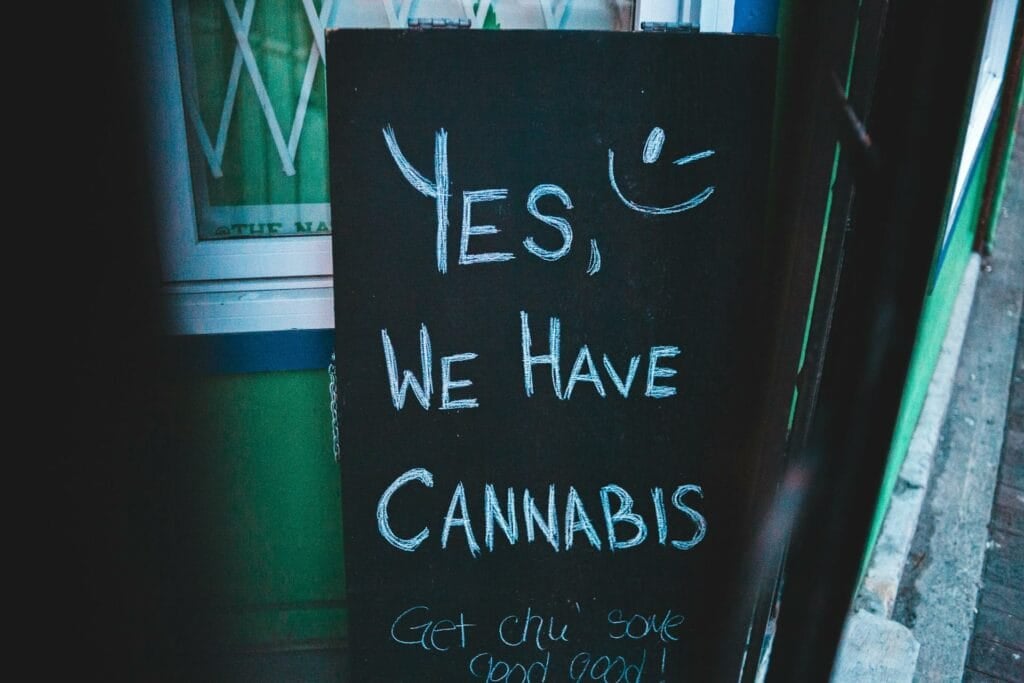Canada has seen widespread use of cannabis, with a significant number of residents embracing its consumption for recreational and medical purposes. In response to the demand, local weed shops have emerged as competitors by providing diverse products and high-quality customer service.
With the proliferation of local weed shops across the country, residents use the “weed shop near me” search to order online and find establishments that tirelessly offer a seamless experience.
Table of Contents
- Recent Health Canada Update Summary
- Cannabis Use
- Social Acceptability
- Cannabis Use for Non-medical Purposes
- Age of Initiation
- Frequency of Weed Use
- Types of Cannabis Products Used and Frequency
- Average Amount Used on a Typical Day
- Relative Levels of CBD and THC in Cannabis Products
- Weed Use With Other Substances
- Sources Used to Obtain Weed
- Cannabis for Medical Purposes
- Frequency of Weed Use for Medical Purposes
- Symptoms, Diseases, and Disorders
- Increasing Cannabis Stores in Canada
- What Local Weed Shop Must Do
- Get Your Quality Products from a Trusted Dispensary
- Frequently Asked Questions

Recent Health Canada Update Summary
The Cannabis Act, in effect since October 17, 2018, regulates weed production, distribution, and sale. Health Canada collects data through the Canadian Cannabis Survey (CCS) to assess the Act’s impact, gather insights on Canadian attitudes and weed usage, and inform policy and program development, such as public education and awareness.
Cannabis Use
Cannabis is used in different ways, such as smoking in its dry form or consuming it in other forms like consumables, concentrates (like hashish), liquids, or other versions.
- Non-medical cannabis use refers to the recreational use of weed for purposes such as social enjoyment, amusement, spirituality, lifestyle preferences, or other non-medical reasons.
- Medical cannabis use is when its use is to treat a disease or disorder or help relieve symptoms associated with a medical condition.
Social Acceptability
Compared to 2018, there has been increased social acceptability of regularly consuming weed through edibles or drinks (58%), vaping weed (55%), and smoking weed (54%) from cannabis stores.
Cannabis Use for Non-medical Purposes
The findings indicate that 26% of Canadians aged 16 and older reported using cannabis from weed dispensaries for non-medical purposes in the past year. Over time, there has been an increase in the past 12 months of weed use, which rose from 22% in 2018.
Age of Initiation
The average age for initiating weed use was 20.8 years, which shows an increase from 18.9 years in 2018. Females were a bit older than males when they tried weed for the first time, with average ages of 21.0 and 20.5 years, respectively.
Frequency of Weed Use
Regarding the frequency of weed use among Canadians who reported using it for non-medical purposes in the past 12 months, 57% reported using weed three days per month or less, while 15% reported daily use.
Types of Cannabis Products Used and Frequency
The three most common cannabis store product types used in 2023 were dried flower or leaf (60%), edible weed (54%), and vape pens or cartridges (34%).
Other product types in cannabis stores available for shopping included oil for oral use (26%), beverages (19%), hashish or kief (16%), topical products (12%), and concentrates or extracts (11%).
Average Amount Used on a Typical Day
Among individuals who used edible weed, the average consumption was approximately 1.4 servings. In 2023, individuals reported using an average of 10.3 puffs from a vape pen and consuming 1.2 drinks when using weed-infused beverages obtained from cannabis stores.
Relative Levels of CBD and THC in Cannabis Products
Starting in 2019, individuals who had used weed in the past 12 months revealed the relative delta-9-tetrahydrocannabinol and CBD levels in the products they used. The responses were as follows:
- 28% indicated higher THC and lower CBD
- 15% indicated higher CBD and lower delta-9-tetrahydrocannabinol
- 12% selected equal levels of THC and CBD
- 17% reported using a mix of these products
Weed Use With Other Substances
In line with previous survey cycles, respondents commonly reported using alcohol (40%) with weed, followed by tobacco (24%). The majority of Canadians who had used weed in the past 12 months reported never combining weed with opioids (96%), sedatives (96%), stimulants (93%), or hallucinogens or dissociatives (90%).
Sources Used to Obtain Weed
- The majority of individuals (73%) reported shopping for weed in metric and imperial units from a business source, such as a cannabis store or when they order online.
- Fifteen percent of respondents obtained weed socially, either by sharing it among friends or acquiring it from a friend, family member, or acquaintance.
- Five percent reported growing their weed or having it grown specifically for them.
- Only 3% of individuals reported shopping from a dealer.

Cannabis for Medical Purposes
In the latest survey, 10% of Canadians aged 16 years and older reported shopping for weed for medical purposes. This figure represents a decrease from both 2018 and 2022, where the corresponding percentages were 13% in both years.
Frequency of Weed Use for Medical Purposes
The most common frequency of weed use reported was less than one day per month, accounting for 28% of respondents. Daily use was the second most common frequency, reported by 27% of respondents. 15% of individuals reported using weed for medical purposes 2 to 3 days per month, which remained consistent over time.
Symptoms, Diseases, and Disorders
The most commonly selected symptoms were problems sleeping or insomnia, chosen by 45% of respondents. 33% of respondents use cannabis for chronic pain and 31% for anxiety.
Increasing Cannabis Stores in Canada
Canada has many recreational cannabis stores distributed across its ten provinces and three territories. As of January 2024, there were over 3,600 recreational weed dispensaries in the country, with an average of nearly one store per 10,000 residents nationwide.
Various provinces follow different approaches to marijuana retail sales. For instance, Ontario, the most populated province, and Alberta, the second-largest weed business map, permit private-sector weed dispensaries to sell marijuana.
Cannabis Stores By Region and Per 10,000 Residents
|
Region |
Cannabis Stores |
Weed Dispensaries |
Per 10,000 Residents |
|
Canada Ontario Alberta British Columbia Manitoba Saskatchewan Quebec Newfoundland and Labrador Nova Scotia New Brunswick Northwest Territories Yukon Prince Edward Island Nunavut |
3,623 1,742 749 494 198 184 98 53 49 38 6 6 5 1 |
Alberta Saskatchewan Manitoba Yukon Northwest Territories Ontario Newfoundland and Labrador British Columbia Nova Scotia New Brunswick Prince Edward Island Nunavut Quebec |
1.63 1.53 1.39 1.36 1.32 1.14 1 0.92 0.48 0.46 0.29 0.25 0.11 |
Data from Toronto and Vancouver, Canada’s largest census metropolitan areas, indicate a trend where more stores are concentrated in neighbourhoods with higher material privilege.
Zoning regulations across most provinces permit stores to operate in areas designated for general retail as long as they adhere to certain jurisdictional guidelines. These regulations usually lead to a more equitable distribution of stores across neighbourhoods, influenced by market demand, visibility, and consumer convenience.
In densely populated urban areas like Toronto, there tends to be a higher prevalence of individuals living alone compared to the national average, along with greater retail density. Young adults’ higher rates of cannabis usage and the elevated demand for such establishments in large urban centers drive the increased presence of cannabis stores in these areas.
What Local Weed Shop Must Do
A local weed shop should take the following actions regarding weed delivery packaging requirements based on the survey findings:
- Ensure that all weed delivery packages include the necessary information and elements as required by regulations.
- Provide clear and accurate THC and CBD content, as indicated by 38% of respondents from the Canadian Cannabis Survey.
- Display health warning messages prominently on the protected packaging.
- Include the standardized weed symbol on the packaging.
- Use child-resistant, protected packaging to ensure safety
- Consider including an excise stamp on the packaging.
- Recognize that weed users are more likely to know these delivery packaging requirements than non-users.
- Continuously educate staff and customers about the delivery packaging requirements to ensure compliance and consumer awareness.
Get Your Quality Products from a Trusted Dispensary
GrassLife is an online cannabis dispensary offering diverse cannabis products. Our range includes edibles, dried flower, capsules, and more, which ensures that cannabis users can find the precise product to suit their needs. Our products vary in cannabinoid content and dosage to cater to both recreational and medicinal purposes. We also adhere to stringent packing standards to enable our customers to understand their purchases fully and practice safe storage of their products.
Frequently Asked Questions
Can I find weed accessories and paraphernalia at local weed shops?
Local in-store or online weed shops carry a range of weed accessories and paraphernalia, such as rolling papers, pipes, vaporizers, bongs, grinders, and storage containers. The availability of these items depends on a specific inventory of the nearest store.
Can I order cannabis products from weed dispensaries online?
Online cannabis stores offer cannabis users convenient access to their favourite weed by operating 24/7 for accessibility. These platforms with touch gestures double tap boast extensive inventories, which makes them an excellent choice for bulk purchases. For medical marijuana patients, an online site proves especially convenient, particularly for those with social anxiety or pain.
What to expect from a cannabis store?
- There are various cannabis products available, so you must read the description.
- You can ask for help from a budtender if you have concerns or need an answer to your inquiry.
- You do not need a medical card.
- You must be of legal age to access cannabis.
- You can order weed at home.
- You can find discounts and promos at an online dispensary.
How to find a cannabis store?
You can go to Google, type “weed dispensaries near me,” and switch to map view. Here, you can navigate by moving left, right, up, down, Zoom in, Zoom out, Home Jump left, Jump right, up or down to navigate to the store you need. Once you find a dispensary near you that offers online access, you can visit their product page to begin shopping.
Related Articles:



